5. Primal Fear
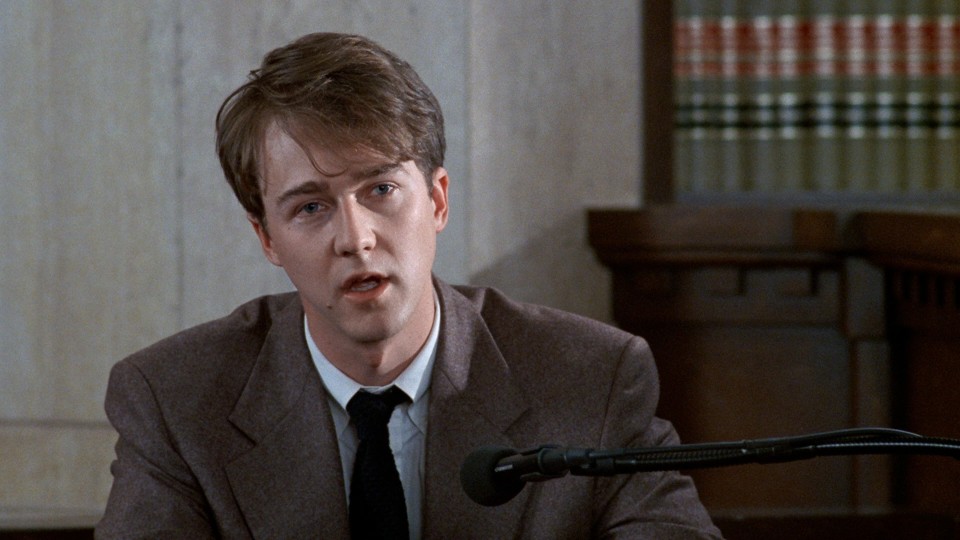
Richard Gere plays a cynical, cocksure, smarmy lawyer in this courtroom drama, and does a very creditable job. He is just disgusting, like a perfect caricature of a stereotypical lawyer.
When a young murderer by the name of Aaron, played by Edward Norton, is caught literally red-handed and is set to be railroaded by the DA’s office, lawyer Martin Vail, played by Richard Gere, takes the case just to spite both the DA and the prosecutor and former flame, played by Laura Linney. He claims he’s only after the publicity it will bring, because winning an impossible case will definitely increase his stature as a defense attorney.
Edward Norton is just superb in this movie. His deer-in-the-headlights look, slow Kentucky twang made slower by a seeming speech impediment, his simple explanations for his loss of memory, and the multiple personalities he displays is one of the finest acting jobs ever, and he was nominated for an Academy Award for his role in this film.
Then comes the twist.
After the climax, where one of Aaron’s more aggressive personalities physically attacks the prosecutor, he is back in his cell with Martin Vail, and apologizes for his attack on the prosecutor, which he isn’t supposed to remember…and then the mask is off for a few minutes. Aaron has been playing everyone, including Vail. He’s not guilty by reason of insanity, and Vail made it happen. The cynicism that Vail had long felt had begun to break, and he actually felt like he’d done a good thing in getting the murderer off, right up until that very moment.
Why is the plot twist crazy?
Edward Norton may be an excellent actor, but it’s nothing compared to what the psychopathic street kid he portrays managed to pull. How could he fool even his own cynic of a lawyer so completely? Even though he is portrayed as knowing what he was doing at the end, he really was crazy.
4. The Vanishing
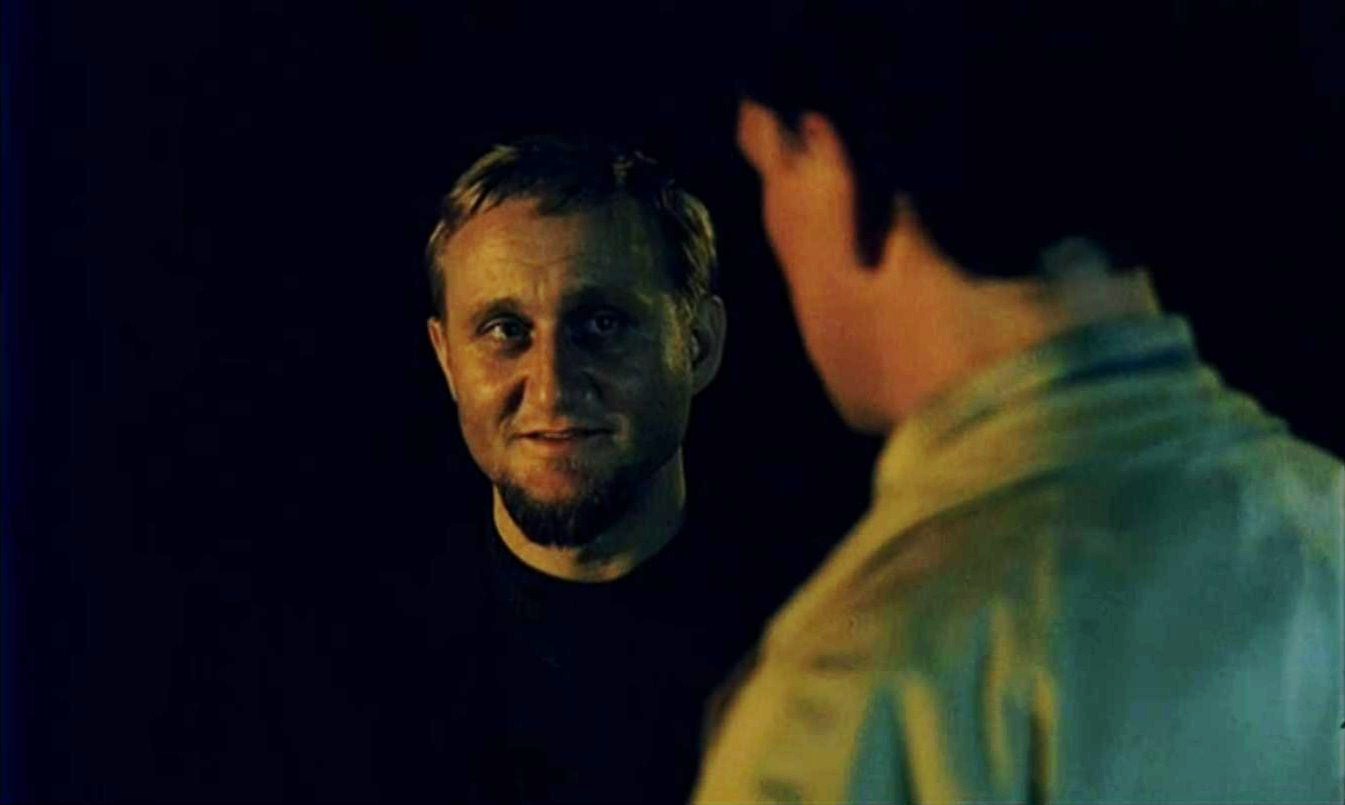
This mystery movie concerns a young Dutch couple, Rex and Saskia, vacationing in France. After an argument they stop at a service station and Saskia, played by Johanna ter Steege, simply vanishes. Nobody knows where she went, but most believe that she simply left Rex, played by Gene Bervoets. He beings a long search, and three years later is still trying to find out what happened to her.
He receives postcards from her apparent abductor with requests to meet a a cafe in Nîmes, but nobody appears until finally he meets the mystery man, Raymond Lemorne, played by Bernard-Pierre Donnadieu. A family man and father, he seems an unlikely kidnapper, and Rex grows fascinated by the man. Eventually Raymond persuades Rex that the only way he’ll find out the truth is to undergo what happened to her himself. He finally agrees, deciding he’d rather know the truth more than anything else. Then comes the twist.
He wakes up in a coffin, buried alive. That is what Raymond did to Saskia.
Why is this plot twist crazy?
The movie seems to be leading us toward solving the mystery, and usually the bad guys in movies get what’s coming to them. Not in this one! Rex learns the truth and there’s nobody to save him. The bad guy wins, and wins because he was able to persuade the protagonist to put himself under a confessed kidnapper’s power. Who would be fool enough to let a kidnapper take him, just to know what happened?
Kiefer Sutherland, that’s who. He plays the same character in the American remake. But of course, in the American version, the bad guy loses.
3. The Others
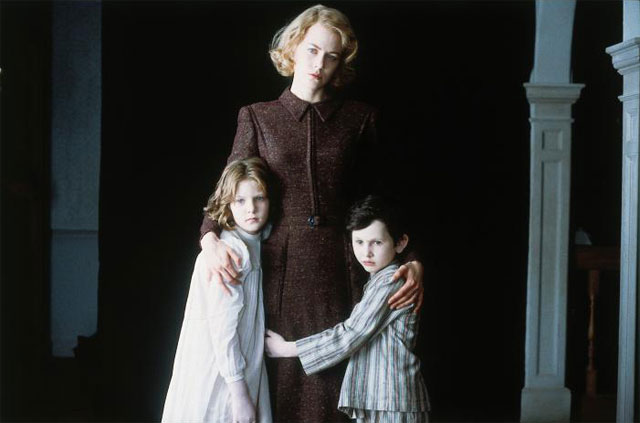
This slow, creepy movie is a ghost story with a twist. Grace Stewart, played by Nicole Kidman, is the mother of two children who are photosensitive, so the house is always dark, with only candlelight allowed. Three servants arrive looking for work, and when they are hired Grace explains her system of keeping the drapes closed and the doors shut and locked, to prevent her children from being exposed to sunlight.
The new servants are odd and old-fashioned, but they start working right away. With their coming, however, strange things begin to happen around the house. Odd noises and voices, a piano playing itself, and the two children begin seeing things. Anne, played by Alakina Mann, says she’s seen a little boy named Victor (played by Alexander Vince) around the house, and has been talking to him. Her brother Nicholas, played by James Bentley, believes everything Anne says, and is frightened by her stories.
Grace, on the other hand, thinks Anne is lying about an imaginary friend. She is very strict and religious, which of course in the movies means Catholic. On the island of Jersey, where the movie takes place, this is not unusual, so for once the movies got it right.
The house in The Others is always wreathed in fog, so much so that when Grace rushes out to find a priest, she gets lost and ends up back home. Her lost husband, who she had presumed killed during WWII, returns from the fog, stays for a very short time, and seems completely dazed throughout.
Strange occurrences continue, until finally all the drapes in the house are missing, and the two children aren’t harmed by the light. The children disappear, and Grace rushes to where she can hear them screaming.
This is where the twist occurs. Grace and her children are dead, and they have been forced to appear at a seance. Grace shakes the table, trying to get the people around it to listen, while her children keep screaming ‘we’re not dead.’
The haunted mother and children turn out to be the ghosts. The Others, are the living.
Why is this plot twist crazy?
As we learned from another plot twisty movie, The Sixth Sense, dead people don’t know they’re dead. Grace and her children remain in denial, mainly because their death was so horrible: Grace smothered her children and killed herself. They have fooled themselves into forgetting…in short, they’ve gone crazy, when one might expect that death would make misfiring synapse a thing of the past. Somehow or other, the human ability to deceive oneself remains intact after death.
2. Planet of the Apes
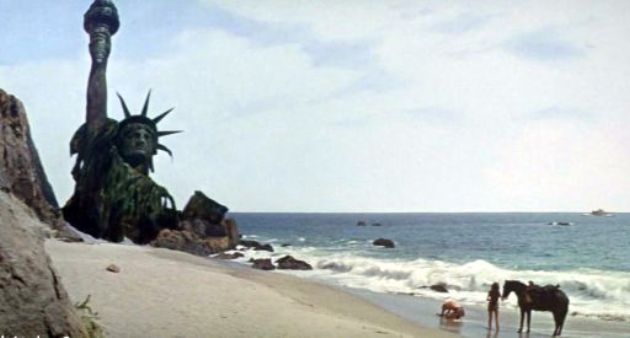
Of all the plot twists in history, this is probably the best known. It has been copied and given homage many times in many other movies, but originally was quite shocking.
Three astronauts return to an unknown planet after being in suspended animation for almost two thousand years, and find a world where humans are unable to speak and evolved apes rule the planet. Taylor, played by Charlton Heston, is shot in the throat and so cannot speak when captured by the apes. He is treated as an unusual specimen and his wound is tended, and eventually he recovers his power to speak.
The apes turn out to be just like humans, with a theocratic, rigidly and racially hierarchal society, and put Taylor on trial for being able to speak. They eventually find that the upper class of apes know perfectly well that humans have the ability to speak, and know all about their potential intelligence.
Then comes the twist. After escaping from the apes, Taylor is riding along the beach and finds a half-buried Statue of Liberty. It is not another planet, it is Earth, and the destruction of human society and the rise of ape civilization is due to nuclear war.
Why is this plot twist crazy?
Taylor has clues throughout that he was on Earth all along. For some reason he neglects to recognize that the very fact the apes speak and write English is an indication that this isn’t a faraway planet, and the artifacts they find are certainly things from Earth. A high-tech colony on another world wouldn’t have had the time, even in 2,000 years to become buried and forgotten.
He just couldn’t face the truth until he had no other choice. That’s some pretty hard core rejection of reality right there.
1. The Usual Suspects
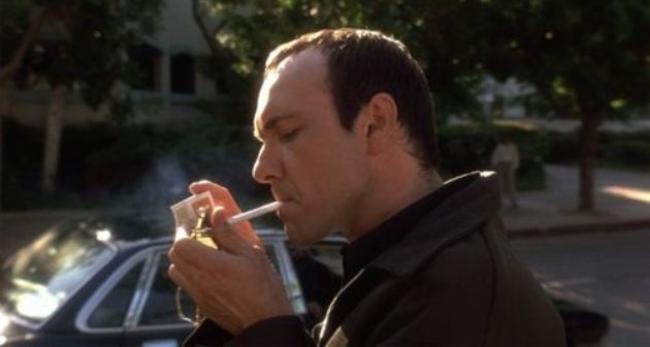
The mother of all plot twists comes from The Usual Suspects, Brian Singer’s first movie. This movie uses every trick to prepare the wrong conclusions, and when the twist comes, it calls everything seen into question.
The Usual Suspects seems like a heist movie, with five habitual criminal put together into a lineup where they crack up like schoolboys, unable to take the cops seriously. They are released and plan to get back some revenge from the police, and things go haywire from there. The story is told by the sole survivor of the five, Verbal, played by Kevin Spacey, who spins a yarn of an urban legend named Kaiser Soze.
This mythical crime boss blackmails the five from the lineup into killing a man that has supposedly seen his face, and their reward is the money a rival drug gang is paying to this well-protected witness. All of them but Verbal are killed in the assault, and the informant dies as well. Verbal is captured by the police, and tells they tale while they wait for him to be released.
As the story unfolds, the police come to the conclusion that one of the five was actually Kaiser Soze, and as he is now dead, that’s an end to it.
Then comes the twist.
After Verbals walks out of the police station the Customs Agent Dave Kujan, played by Chazz Palminteri, realizes that many of the elements of the story are taken from things around the room, even from a coffee mug. He races out to find Verbal before it’s too late, but Verbal was Keyser Soze after all…or was he?
Why is this plot twist crazy?
It’s almost impossible to know what happened and what didn’t after the twist. Which parts were true, which parts were made up? How did the other four criminals actually come to be involved? Were any of Verbal/Keyser’s associates real? It’s utterly mind-boggling, and from the stories about making the movie, it confused the writers and director too. Now that’s crazy.
Author Bio: James Wilson nerds for a living and writes in his spare time. He lives in the mountains of Arizona, well above the desert. His books and other writing may be found at www.sunderedpheres.com.